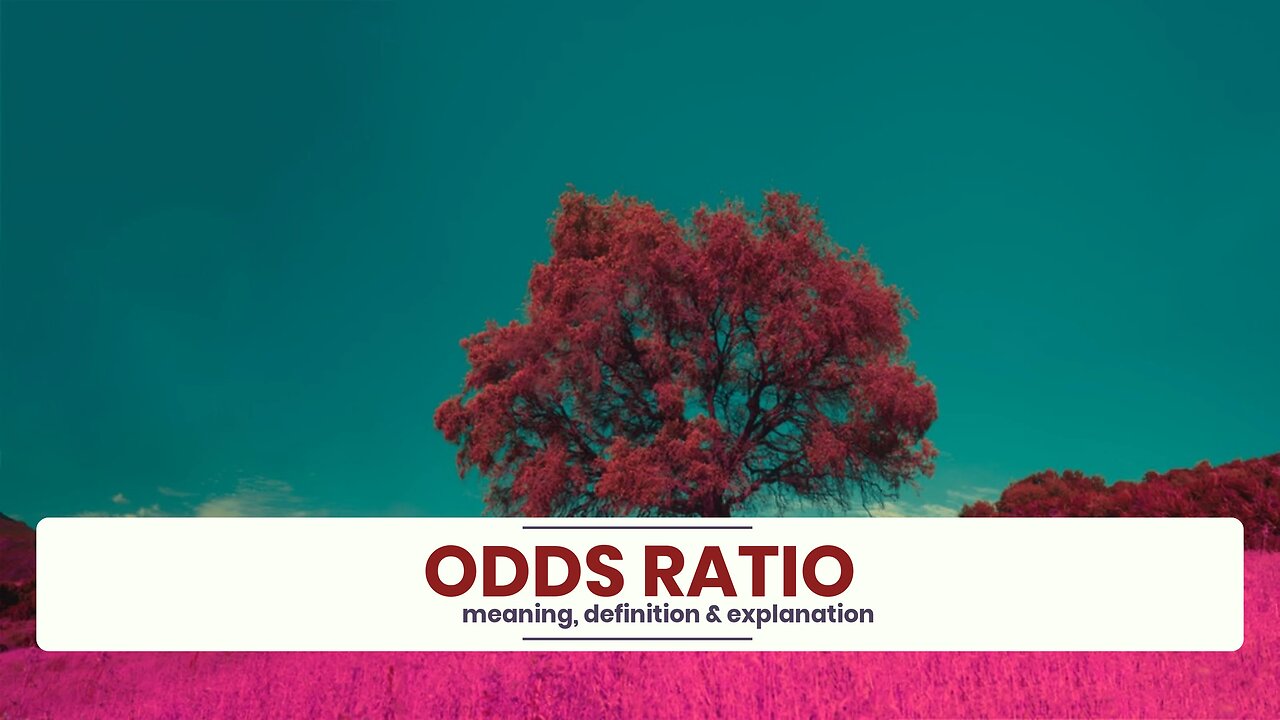Premium Only Content

What is ODDS RATIO?
✪✪✪✪✪
http://www.theaudiopedia.com
✪✪✪✪✪
What does ODDS RATIO mean? ODDS RATIO meaning - ODDS RATIO definition - ODDS RATIO explanation. What is the meaning of ODDS RATIO? What is the definition of ODDS RATIO? What does ODDS RATIO stand for? What is ODDS RATIO meaning? What is ODDS RATIO definition?
In statistics, the odds ratio (OR) is one of three main ways to quantify how strongly the presence or absence of property A is associated with the presence or absence of property B in a given population. If each individual in a population either does or does not have a property "A", (e.g. "high blood pressure"), and also either does or does not have a property "B" (e.g. "moderate alcohol consumption") where both properties are appropriately defined, then a ratio can be formed which quantitatively describes the association between the presence/absence of "A" (high blood pressure) and the presence/absence of "B" (moderate alcohol consumption) for individuals in the population. This ratio is the odds ratio (OR) and can be computed following these steps:
For a given individual that has "B" compute the odds that the same individual has "A"
For a given individual that does not have "B" compute the odds that the same individual has "A"
Divide the odds from step 1 by the odds from step 2 to obtain the odds ratio (OR).
The term "individual" in this usage does not have to refer to a human being, as a statistical population can measure any set of entities, whether living or inanimate.
If the OR is greater than 1, then having "A" is considered to be "associated" with having "B" in the sense that the having of "B" raises (relative to not-having "B") the odds of having "A". Note that this does not establish that B is a contributing cause of "A": it could be that the association is due to a third property, "C", which is a contributing cause of both "A" and "B" (confounding). The odds ratio compares the occurrence of the outcome in the presence of a particular exposure, with the occurrence of the outcome in the absence of a particular exposure.
The two other major ways of quantifying association are the risk ratio ("RR") and the absolute risk reduction ("ARR"). In clinical studies and many other settings, the parameter of greatest interest is often actually the RR, which is determined in a way that is similar to the one just described for the OR, except using probabilities instead of odds. Frequently, however, the available data only allows the computation of the OR; notably, this is so in the case of case-control studies, as explained below. On the other hand, if one of the properties (say, A) is sufficiently rare (the "rare disease assumption"), then the OR of having A given that the individual has B is a good approximation to the corresponding RR (the specification "A given B" is needed because, while the OR treats the two properties symmetrically, the RR and other measures do not).
In a more technical language, the OR is a measure of effect size, describing the strength of association or non-independence between two binary data values. It is used as a descriptive statistic, and plays an important role in logistic regression.
-
 1:52
1:52
The Audiopedia
7 months agoWhat is EXECUTIVE DIRECTOR?
531 -
 LIVE
LIVE
Vigilant News Network
8 hours agoBombshell Study Reveals Where the COVID Vaccine Deaths Are Hiding | Media Blackout
2,220 watching -
 1:17:59
1:17:59
Sarah Westall
3 hours agoDOGE: Crime & Hysteria bringing the Critics & the Fearful - Plus new CDC/Ukraine Crime w/ Dr Fleming
10.1K2 -
 45:39
45:39
Survive History
9 hours ago $0.33 earnedCould You Survive in the Shield Wall at the Battle of Hastings?
6.49K5 -
 1:50:28
1:50:28
TheDozenPodcast
8 hours agoViolence, Abuse, Jail, Reform: Michael Maisey
13.4K1 -
 23:01
23:01
Mrgunsngear
1 day ago $2.94 earnedWolfpack Armory AW15 MK5 AR-15 Review 🇺🇸
29.3K12 -
 25:59
25:59
TampaAerialMedia
1 day ago $0.72 earnedUpdate ANNA MARIA ISLAND 2025
13.1K1 -
 59:31
59:31
Squaring The Circle, A Randall Carlson Podcast
10 hours ago#039: How Politics & War, Art & Science Shape Our World; A Cultural Commentary From Randall Carlson
10.4K2 -
 13:21
13:21
Misha Petrov
10 hours agoThe CRINGIEST Thing I Have Ever Seen…
9.2K34 -
 11:45
11:45
BIG NEM
6 hours agoWe Blind Taste Tested the Best Jollof in Toronto 🇳🇬🇬🇭
5.02K